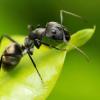This is an old tutorial that I discovered years back when I first wanted to start beekeeping. I decided to share it here for any new/aspiring bee keepers. This tutorial includes how to build everything in a basic Langstroth hive except for the hive's cover and frames (which I will leave links for).

Tools:
•Hammer (and finishing nails)
•Sand Paper
•Dremel
•Wood Glue
•Wood Rasp
•Hand Saw
•Yard Stick
Materials:
•Wood must be 3/4" thick.
•10-Frame Bee Hive Lid (https://bit.ly/2XSdHDn)
•20- Deep Super Frames (https://bit.ly/2VvAbwt)
Step 1: Building the Supers
A deep super consists of 4 boards. The two side boards measuring 19 7/8" . The two end boards measuring 16 1/4". All boards should be 9 5/8" in height.
Nail these boards together to complete the box. Repeat 2x.
(TIP: When nailing boards together use a cinder block edge to keep a 90 degree angle)

Step 2: Cut Notches at the Tops of Each Box
On the two side boards of each box you will need to cut a notch so the frames can sit evenly and boxes/lids can lie level.
To do this, measure 3/8" in from the top outside edge of the board and make a mark. Measure 5/8" down from the top inside edge and make a mark.
Cut out a notch using these lines as reference. (For cleanest cuts, I recommend using a dremel with a small cutting wheel attachment).


Step 3: Beehive Base
Cut a piece of 3/4" thick plywood to 21 5/8" in length and 15 1/2" in width. Side rails (also 3/4" thick) will be 22" in length, make two of these. The rear rail (3/4" thick) will be 15 1/2" in length. Once you have cut all of your wood, nail together all of your rails. Measure 1 inch down from each rail and make a line. Hammer in finish nails along this line so you can rest your plywood bottom in the middle. Secure the bottom with wood glue or more nails.




Step 4: Frames
Each box can hold 10 frames. Slide in the frames you bought as shown in the picture.
Step 5 (Optional): Paint
Painting your beehive is optional. If do decide to do it I recommend a bright color, preferably white, to protect the hive from over heating.

Once you set on the top cover you bought you will be finished.
Happy Beekeeping!
Edited by AntPhycho, April 28 2019 - 9:20 PM.

















